Blackbird vs crow – they are both common birds, but do you know the difference between the two?
Many people mistake these two birds for each other, which is understandable. However, even though they’re both black birds, several traits set them apart.
For example, blackbirds and crows look similar at a glance, but they’re different from each other in the shape of their tails, the shape of their beaks, their diet, size, calls, and nesting.
In this article, we’ll go over both the similarities and differences between these two birds to help you quickly identify who’s who.
On this page
Body & Shape
From a distance, blackbirds and crows look almost the same, but when taking a closer look, you can see the different physical characteristics of these birds.
One of the best indicators to tell these birds apart is by looking at their tails. When in flight, crow’s tails are fan-shaped in appearance, while blackbirds have relatively long tails that end in a point.
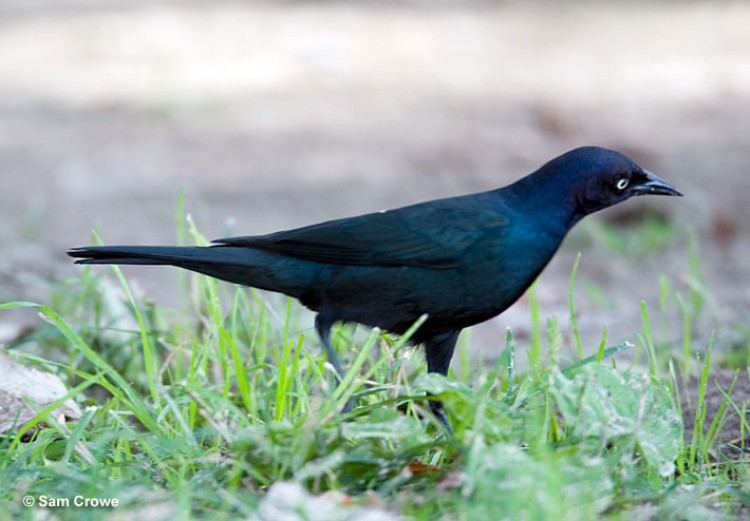
Photograph © Greg Lavaty.
In addition, crows’ beaks are significantly different from blackbirds’ beaks. Crows have beaks that are nearly black; in some lighting, they look deep purple.
Their beaks are fairly large and nearly 2 inches long. Their bills are strong and slightly arched, which allows them to effortlessly consume fruits, seeds, and insects.
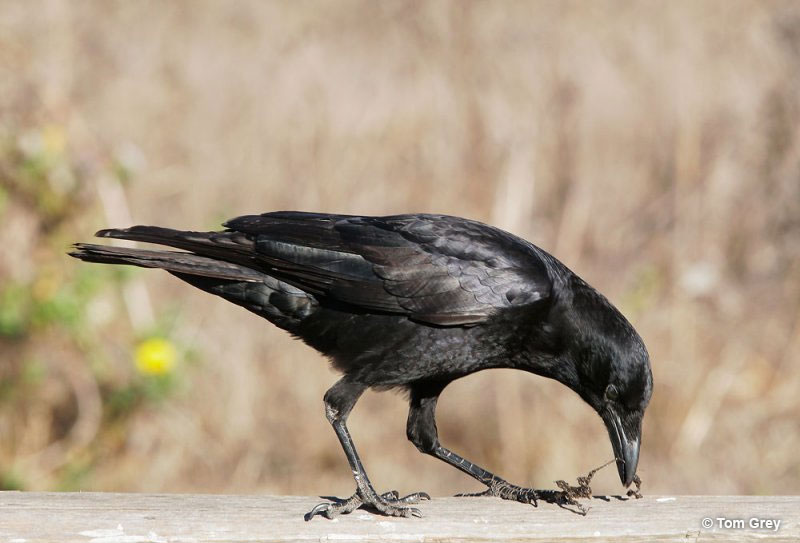
© Tom Grey
Blackbirds have moderately sized bills that vary in color depending on the species. Their medium-sized bills allow them to easily consume berries, insects, and bugs. Since their bills are thin and pointed, they’re a great feature to look for when trying to identify a bird.
It shouldn’t come as a surprise that there are countless different blackbird species in the United States – from Brewer’s Blackbirds to Red-winged and Yellow-headed Blackbirds. Even orioles, grackles, and meadowlarks are part of the blackbird family.
Blackbird vs Crow Size
Another excellent characteristic to look at is the size difference between these 2 birds. On average, blackbirds are four times smaller than crows.
The average adult blackbird weighs around a 1/4 of a pound, and the average adult crow weighs around 1 pound.
Related: Blackbird vs Crow vs Raven
Additionally, blackbirds vary in size but are usually 9 to 11 inches long, and crows are 16 to 20 inches long. This makes them easily visible when they’re perched in dense trees.
Speed
Crows have a larger wingspan than blackbirds. Crows have a steady, frequent “rowing” wing-beat and don’t glide at all. Blackbirds fly with rapid wing beats that are mixed with short glides.
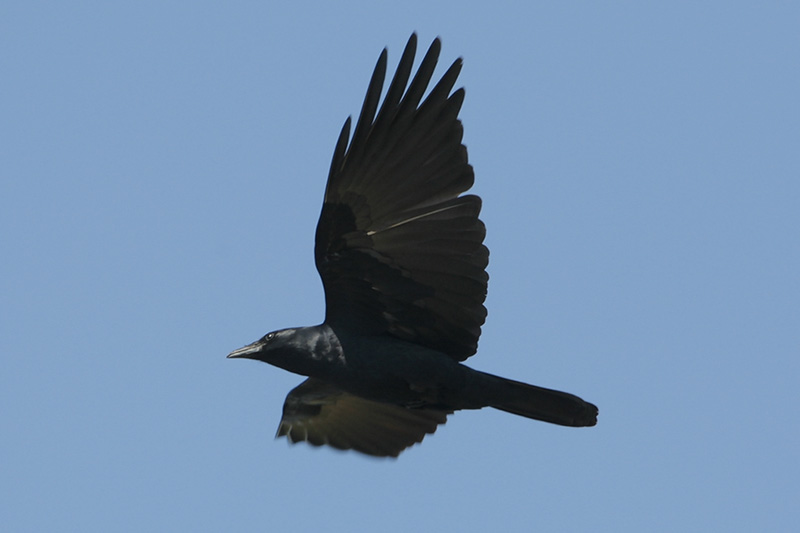
Fish Crow. Photograph © Greg Lavaty.
Crows fly about the same speed as blackbirds, even though they have a longer wingspan. Blackbirds fly at a speed of 17 to 28 mph, while crows have an average speed of 30 mph.
Age
On average, crows live longer than blackbirds. The average lifespan of a crow is 7 to 8 years, while blackbirds live to be about 4 years old.
American Crows are incredibly susceptible to the West Nile virus. This virus was introduced to North America in 1999. Almost all crows that contract this virus will die within 1 week. No other bird in North America is as susceptible to this disease as the American Crow, and population loss in some areas was severe.
Related: Are blackbirds good or bad omens?
Blackbirds are most susceptible to pesticides. However, gardeners can help prevent blackbird deaths by not using garden chemicals and planting shrubbery that produces berries and attracts caterpillars.
Of course, both of these birds can live to be a lot older if they remain safe from threats in the wild. In captivity, where proper nutrition is given and they are safe from all dangers, crows live up to an average age of 30 years, and blackbirds live up to an average age of 21 years.
Blackbird vs Crow Behavior
Blackbirds are monogamous birds and usually migrate a lot farther than crows do. However, they’re birds that don’t do well around humans and pets. Crows thrive in environments like this, allowing them not to travel as far. Blackbirds are monogamous, and both parents will help raise the young. However, female blackbirds are usually the ones to build the nest.
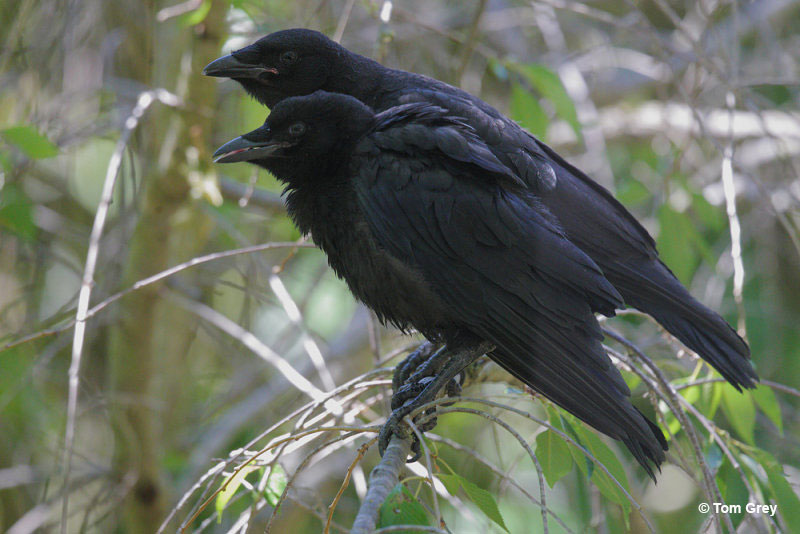
Crows engage in winter brooding. This involves them gathering in hundreds or thousands in habitats with large trees. They usually engage in this in the afternoon and will move to their permanent site during the night. Additionally, crows are cooperative breeders.
Related: How to attract crows?
This means some offspring will not leave the nest and start their own families. Instead, they’ll remain at the nesting site to raise other young crows that aren’t their own and defend against predators.
American crows are known to engage in a behavior called anting. Anting is a unique process that allows birds to fend off any parasites. Anting involves standing on an anthill and allowing ants to climb on them. They’ll then rub the ants throughout their feathers.
Blackbird vs Crow Diet
Blackbirds primarily consume grains and seeds, but like a lot of small birds, they also eat insects when they’re plentiful in the summer. Blackbirds will consume almost anything in outdoor cafés, parks, and towns.
They’ve also been seen eating young voles, small frogs, Brewer’s Sparrows, and Ring-necked Pheasant nestlings. Around marshes, they can be seen walking on lily pads and hunting aquatic insects.
Crows eat various foods, including seeds, grains, nuts, berries, fruits, and many small animals, like mice and earthworms. In addition, they also eat a variety of insects and aquatic animals like crop pests, young turtles, fish, clams, mussels, and crayfish.
In addition, crows are frequent nest predators. They’ll consume the nestlings and eggs of many species, including robins, sparrows, terns, jays, eiders, and loons. They’ve even been known to eat garbage and carrion.
Location
Another difference between blackbirds and crows is where you can find them. Blackbirds are found all across the United States. However, they tend to inhabit areas near coniferous, wet forests and wetlands.
American crows are also found across the U.S. Crows often inhabit areas near forest edges or with a few trees. These birds can also be found in cities; you can find them anywhere that offers abundant food, like dumps and city parks.
Nest & Eggs
Blackbirds
Blackbirds tend to nest in loose colonies that can be anywhere from a few pairs to more than 100. Females show up first to choose the nesting site, and then others will arrive to pick amongst areas nearby. Some years, colonies nest in low shrubs, and others, the same birds are in the treetops.
Female blackbirds are the ones to build the nest cup. They often use twigs and plant stems that are lined with hair, rootlets, and fine-dried grasses.
Sometimes even manure and mud are used to cement the materials. Completion can be anywhere from 5 to 10 days, and the completed nest is around 6 inches wide and 2 inches tall.
- Clutch size is 3 to 7 eggs.
- Blackbirds have 1 to 2 broods per breeding season.
- Egg length can be anywhere from 0.9 to 1.1 inches (2.3 to 2.9 centimeters).
- Egg width can be anywhere from 0.7 to 0.8 inches (1.7 to 2 centimeters).
- The incubation period is 11 to 17 days.
- The nestling period is 12 to 16 days.
Crows
Crows commonly hide their nests in a horizontal tree branch or near the trunk of a tree. The nest is often placed near the top quarter or third of the tree. Crows often place their nests in evergreens, but they can also be seen nesting in deciduous trees if evergreens aren’t available.
Both parents will help create the nest. Additionally, young crows that were born the year before will occasionally help. Crows’ nests are often primarily made out of medium-sized twigs and have an inner cup made of weeds, pine needles, animal hair, or soft bark.
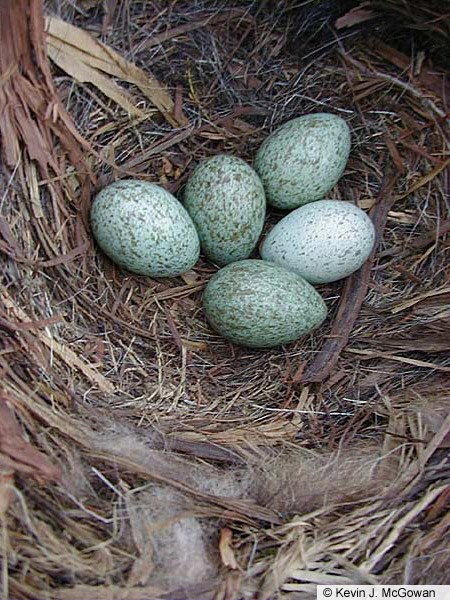
American crow nest and eggs
Nest size can vary significantly; however, they’re often 6 to 19 inches wide, with an inner cup around 6 to 14 inches wide and 4 to 15 inches tall.
- Clutch size is 3 to 9 eggs.
- Crows have 1 to 2 broods per breeding season.
- Egg length can be anywhere from 1.4 to 1.9 inches (3.6 to 4.7 centimeters).
- Egg width can be anywhere from 1.0 to 1.2 inches (2.6 to 3.1 centimeters).
- The incubation period is 16 to 18 days.
- The nestling period is 20 to 40 days.
Blackbird vs Crow – Frequently Asked Questions
Is there a difference between a crow and a blackbird?
Blackbirds and crows have many differences, like their body shape, size, age, speed, location, diet, and behavior.
How can you tell a blackbird from a crow?
You can tell a blackbird from a crow by looking at its tails. Crow’s tails are fan-shaped in appearance, while blackbirds have relatively long tails that end at a point. This can easily be seen when the birds are in flight.
Additionally, these birds’ beaks are significantly different. Crows have beaks that are nearly black and are relatively large. Their bills are strong and slightly arched, which allows them to effortlessly consume fruits, seeds, and insects. Blackbirds have moderately sized, thin pointed bills that allow them to easily consume berries, insects, and bugs.
Do crows eat blackbirds?
The answer to this question is more complex than a yes or a no. Crows are known to eat other birds but not specifically blackbirds. Any bird that is defenseless or smaller than them can be a victim. Crows have often killed and consumed birds like finches, canaries, pigeons, doves, and sparrows.
That doesn’t mean they won’t kill and consume a blackbird. These birds are opportunists, so they can eat blackbirds. However, they consume the nestlings and eggs of other birds the most often.

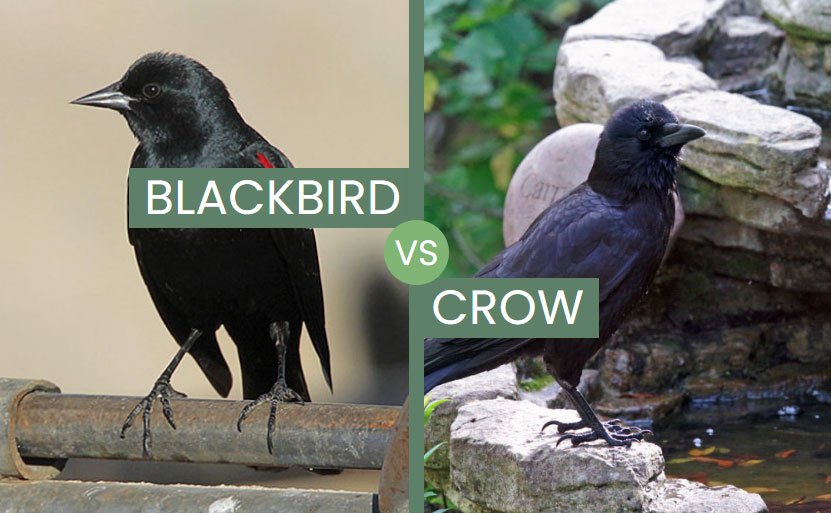


Diane
Tuesday 19th of March 2024
I live in northeast Ohio. The crows perch on the tall trees in our back yards. What can I do to keep the crows from scaring off the birds by my birdfeeders?
Patrick O'Donnell
Saturday 23rd of March 2024
@Diane- Unfortunately, there might not be a whole lot that you can do. However, if the crows realize they aren't welcome, they'll leave. One idea is making loud noises to scare the crows away again and again until they don't come back. In the meantime, that will scare other birds away too but once the crows leave, the other smaller birds should return.